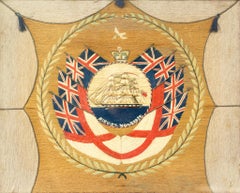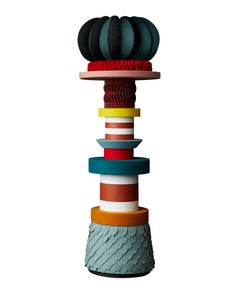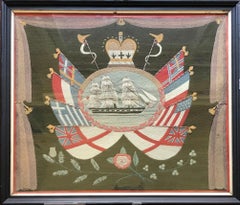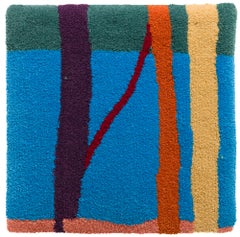Art by Medium: Wool
Mid-19th Century Folk Art Art by Medium: Wool
Wool
21st Century and Contemporary Contemporary Art by Medium: Wool
Wool, Canvas, Thread, Mixed Media, Acrylic
2010s Contemporary Art by Medium: Wool
Enamel
Mid-19th Century Folk Art Art by Medium: Wool
Wool
21st Century and Contemporary Contemporary Art by Medium: Wool
Wool
20th Century Art by Medium: Wool
Wool
1980s Abstract Geometric Art by Medium: Wool
Wool
21st Century and Contemporary Contemporary Art by Medium: Wool
Wool
1970s Art by Medium: Wool
Wool
21st Century and Contemporary Contemporary Art by Medium: Wool
Wool
1970s Contemporary Art by Medium: Wool
Wool
21st Century and Contemporary Contemporary Art by Medium: Wool
Wool
21st Century and Contemporary Contemporary Art by Medium: Wool
Wool, Cotton, Thread, Watercolor
21st Century and Contemporary Contemporary Art by Medium: Wool
Wool, Cotton, Thread, Linen
19th Century Other Art Style Art by Medium: Wool
Wool
20th Century Modern Art by Medium: Wool
Tapestry, Wool
1980s Contemporary Art by Medium: Wool
Wool
1950s Folk Art Art by Medium: Wool
Wool
20th Century Art by Medium: Wool
Wool, Wood
21st Century and Contemporary Contemporary Art by Medium: Wool
Canvas, Oil, Wool, Acrylic
21st Century and Contemporary Contemporary Art by Medium: Wool
Wool
21st Century and Contemporary Contemporary Art by Medium: Wool
Wool
20th Century Art by Medium: Wool
Wool
2010s Contemporary Art by Medium: Wool
Wool, Other Medium
Early 2000s Contemporary Art by Medium: Wool
Leather, Wool, Cotton Canvas, Mixed Media
20th Century American Modern Art by Medium: Wool
Wool
1840s Art by Medium: Wool
Wool, Cotton, Silk
1980s Contemporary Art by Medium: Wool
Wool
15th Century and Earlier Art by Medium: Wool
Fabric, Textile, Wool
20th Century Folk Art Art by Medium: Wool
Wool, Felt
20th Century Contemporary Art by Medium: Wool
Metal
2010s Contemporary Art by Medium: Wool
Wool, Yarn
2010s Fauvist Art by Medium: Wool
Wool, Felt, Mixed Media
21st Century and Contemporary Contemporary Art by Medium: Wool
Wool, Canvas, Thread, Mixed Media, Acrylic
21st Century and Contemporary Contemporary Art by Medium: Wool
Wool, Canvas, Thread, Mixed Media, Acrylic
21st Century and Contemporary Contemporary Art by Medium: Wool
Wool, Canvas, Thread, Mixed Media, Acrylic
21st Century and Contemporary Contemporary Art by Medium: Wool
Wool, Canvas, Thread, Mixed Media, Acrylic
20th Century Modern Art by Medium: Wool
Tapestry, Wool
21st Century and Contemporary Contemporary Art by Medium: Wool
Wool, Canvas, Thread, Mixed Media, Acrylic
21st Century and Contemporary Contemporary Art by Medium: Wool
Wool, Canvas, Thread, Mixed Media, Acrylic
Early 2000s Expressionist Art by Medium: Wool
Tapestry, Wool
21st Century and Contemporary Surrealist Art by Medium: Wool
Wool, Canvas, Thread, Mixed Media, Acrylic
21st Century and Contemporary Contemporary Art by Medium: Wool
Wool
21st Century and Contemporary Contemporary Art by Medium: Wool
Wool, Canvas, Thread, Mixed Media, Acrylic
21st Century and Contemporary Contemporary Art by Medium: Wool
Wool, Canvas, Thread, Mixed Media, Acrylic
21st Century and Contemporary Surrealist Art by Medium: Wool
Wool, Canvas, Thread, Mixed Media, Acrylic
21st Century and Contemporary Contemporary Art by Medium: Wool
Wool, Canvas, Thread, Mixed Media, Acrylic
2010s Contemporary Art by Medium: Wool
Wool, Plexiglass, Paper, Dye, Acrylic
1970s Feminist Art by Medium: Wool
Wool
Mid-20th Century Abstract Art by Medium: Wool
Fabric, Textile, Tapestry, Wool
2010s Contemporary Art by Medium: Wool
Wool, Plexiglass, Paper, Dye, Acrylic
2010s Abstract Art by Medium: Wool
Wool, Cotton
2010s Art by Medium: Wool
Wool, Thread, Yarn, Mixed Media
20th Century Folk Art Art by Medium: Wool
Wool, Felt
1970s Modern Art by Medium: Wool
Tapestry, Wool
1960s Art by Medium: Wool
Wool
Mid-20th Century Abstract Art by Medium: Wool
Fabric, Textile, Tapestry, Wool, Linen, Thread
21st Century and Contemporary Contemporary Art by Medium: Wool
Wool
Mid-20th Century Modern Art by Medium: Wool
Metal, Copper
2010s Abstract Art by Medium: Wool
Enamel



